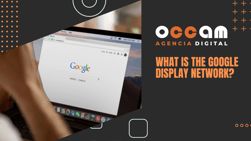Index Content
Display advertising is a type of advertising that consists of placing advertising banners of one company or brand on the site of another. The relationship between brands is carried out through an affiliate network that connects both parties: one that wants to advertise, and another that offers its site to place the advertisements of the former.
The main element: The banner
A banner is a digital advertising piece, generally a rectangular portion, which is placed on a web page. The space, initially blank, is filled with the advertisement that a brand has created and which is usually placed at the top or on the side. Sometimes, banners are dynamic (floating) and slide with the cursor following the path that the user makes on the page, always being present on the screen. The banner can include image, text and audio, being able to create ads in image or video form. They adapt to different devices such as tablets and mobiles by decreasing or increasing their size proportionally without losing information or quality, as well as moving position if necessary for proper viewing.
Because some displays obstruct part of the view of the page, the banner in these cases must include a closing box, located in the upper right corner of a dimension of 50x50 dp. A text such as "cancel" or "close" or "skip to info" or "go to content" can be added and must be available from the beginning of the advertising experience.

CANVA.COM
Although the banner is the main form of display advertising, display advertising can also be done with pop-ups or pop-up windows that appear suddenly and usually in motion. However, these forms are more intrusive and do not always have a good effect on the user.
Display advertising is one of the main remarketing strategies, advertising campaigns specifically dedicated to users who have previously interacted with a company. As a remarketing strategy, and as advertising in itself, display ads are personalised according to the visits and tastes of each user. Cookies are usually used on websites to detect searches, needs and desires of the user that will appear in display ads when they visit other different pages. However, display advertising will be more effective the more optimal the relationship between the banner and the content of the page where it is located.
How display works:
As mentioned above, display advertising involves three players: the site that advertises, the site that hosts the ad, and the affiliate network that connects them.
- The advertiser signs up with the affiliate network in order to generate contact with the site that will host the ad
- It is important that it is the company itself that selects these sites as both will be linked from the moment of the display and this can damage the image of both in the event that one of them is not honest or appropriate. For example, a meat company would never choose an online site for vegan products to place its banner on as it knows it would not get good results.
- The affiliate network manages the exchange and keeps a part of the price agreed between the parties, where the type of ad (banner, pop-up), the duration of the ad (if any), the position, the price, the number of times the ad will appear, etc. are agreed upon.
This type of advertising offers great benefits in terms of ROI and the corresponding number of sales, although sales are not always the aim of display advertising, which is also used to advertise the brand itself without the need to sell a specific product. In fact, display advertising makes up half of all advertising on the Internet. In fact, the name display emerged to differentiate this type of advertising, which originated on the Internet, from other forms of advertising derived from it.
It is a highly segmented type of advertising, which is dedicated to a very specific audience and seeks to generate a large impact. Therefore, the choice of the target to which a specific banner appears on a specific page is the result of an intense previous study and analysis. Segmentation favours the study and analysis of the results and the corresponding implementation of sales strategies. It is an easy advertising to measure and count the reach it has. Increases
For display advertising to be successful, it is essential that the banner works as a link to the sales page of the advertised product or service. On the other hand, the company that has paid for the ad must focus part of its efforts in this display strategy on creating a good landing page. It might seem then that the page that hosts the banner loses more than it gains by hosting this type of advertising, but the reality is that it keeps a large part of the benefit that the link page obtains if it achieves a purchase.
However, one of the biggest advantages of display advertising is that it costs much less than other forms of advertising.
Payment models
There are four main payment models when it comes to display advertising. Traditional advertising.
- CPM (Cost per thousand impressions) an amount is paid for the ad to be seen 1,000 times on the platform. Once this number is reached, the payment must be resumed or the ad disappears.
- CPC (Cost per click): the advertiser pays every time a user clicks on their ad, this rate guarantees that every euro invested in the advertising strategy.
- Cost per Action: the advertiser only pays when the customer performs a certain action, such as buying a product. Part of this profit, however, usually goes to the page that hosts the banner.
- Flat rate: a fixed amount is paid regardless of the number of clicks or visits on the ad.




